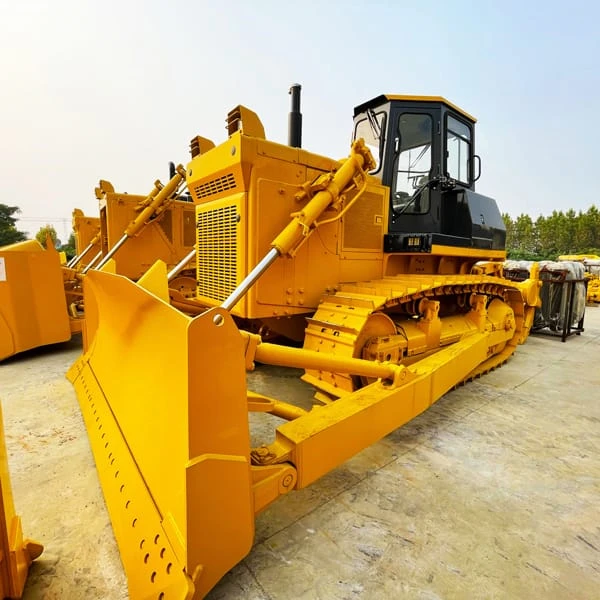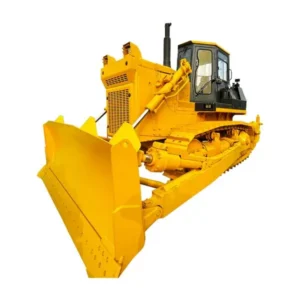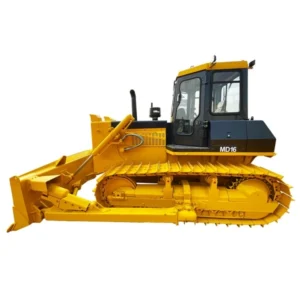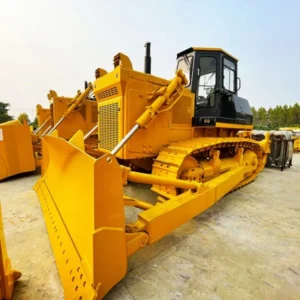Building a road with a dozer can significantly enhance your property’s accessibility and value. However, this complex task requires careful planning and execution to avoid costly mistakes. In this comprehensive guide, we will discuss common pitfalls to avoid when building a road with a dozer and provide tips to ensure a smooth and successful project.
Introdução

Building a road with a dozer involves more than just moving dirt. It requires strategic planning, proper equipment use, and an understanding of the terrain and environmental factors. Avoiding common pitfalls can save time, money, and effort while ensuring the road meets your needs and standards.
Índice
The Importance of Planning and Preparation
One of the most crucial steps in building a road with a dozer is planning and preparation. Skipping this phase can lead to significant issues down the line. Proper planning involves:
- Assessing the terrain
- Obtaining necessary permits
- Choosing the right materials
- Planning the route
- Considering drainage and erosion control
Assessing the Terrain
Before starting any construction, it’s essential to conduct a thorough assessment of the terrain. This helps identify any potential obstacles or challenges that might arise during the road-building process.
Steps to Assess the Terrain
- Survey the Area: Use topographic maps and surveys to understand the lay of the land.
- Soil Testing: Conduct soil tests to determine the suitability of the ground for road construction.
- Identify Obstacles: Look for natural obstacles such as large rocks, trees, or bodies of water that might need to be removed or worked around.
Obtaining Necessary Permits
Building a road often requires various permits from local authorities. Failing to obtain these permits can result in legal issues and project delays.
Types of Permits You Might Need
- Environmental Permits: Ensure compliance with environmental regulations.
- Zoning Permits: Verify that the land is zoned for the intended use.
- Construction Permits: Obtain necessary approvals for construction activities.
Choosing the Right Materials
Using the correct materials is critical to the durability and longevity of the road. The choice of materials depends on the type of road being built and the expected traffic load.
Common Road-Building Materials
- Gravel: Provides a solid base layer for most types of roads.
- Sand: Often used in combination with gravel for better compaction.
- Asphalt: Ideal for roads that will experience heavy traffic.
- Geotextiles: Used to prevent soil erosion and improve drainage.
Planning the Route
Careful route planning can save significant time and effort. The route should be planned to minimize environmental impact and construction costs.
Considerations for Route Planning
- Minimize Elevation Changes: Avoid steep grades that can be challenging to navigate and maintain.
- Avoid Sensitive Areas: Plan the route to avoid wetlands, protected areas, and other sensitive environments.
- Accessibility: Ensure the road provides easy access to all necessary areas.
Considering Drainage and Erosion Control
Proper drainage and erosion control are crucial to prevent road damage and ensure longevity. Ignoring these aspects can lead to significant maintenance issues.
Techniques for Drainage and Erosion Control
- Culverts: Install culverts to allow water to pass under the road.
- Ditches: Use ditches alongside the road to direct water away from the roadway.
- Retaining Walls: Build retaining walls in areas prone to erosion to stabilize the soil.
- Geotextiles and Riprap: Use geotextiles and riprap to prevent erosion on slopes and embankments.
Common Pitfalls When Building a Road with a Dozer
Avoiding common pitfalls can ensure a successful road-building project. Here are some of the most frequent mistakes and how to avoid them:
Inadequate Planning and Surveying
Failing to plan and survey adequately can result in unexpected obstacles and additional costs. Proper planning includes thorough surveying and understanding the terrain.
Incorrect Equipment Use
Using the wrong equipment or not operating it correctly can lead to inefficiencies and potential damage. Ensure that the dozer is suitable for the terrain and the task at hand.
Neglecting Drainage and Erosion Control
Ignoring drainage and erosion control measures can cause significant damage to the road over time. Implementing proper drainage solutions from the start is crucial.
Overlooking Environmental Regulations
Failing to comply with environmental regulations can result in legal issues and fines. Always ensure that your project adheres to local, state, and federal environmental guidelines.
Skimping on Materials
Using substandard materials can compromise the road’s durability and lead to frequent repairs. Invest in high-quality materials to ensure the road’s longevity.
Table of Common Pitfalls and Solutions

To provide a clear overview, the following table summarizes common pitfalls and their solutions:
| Pitfall | Consequence | Solution |
|---|---|---|
| Inadequate Planning and Surveying | Unexpected obstacles and costs | Conduct thorough planning and surveying |
| Incorrect Equipment Use | Inefficiencies and potential damage | Use the correct equipment and ensure proper operation |
| Neglecting Drainage and Erosion Control | Road damage over time | Implement drainage and erosion control measures |
| Overlooking Environmental Regulations | Legal issues and fines | Comply with all environmental regulations |
| Skimping on Materials | Compromised road durability | Invest in high-quality materials |
Best Practices for Building a Road with a Dozer
To ensure a successful road-building project, consider the following best practices:
Use Proper Equipment
Choosing the right equipment is essential. A dozer with the appropriate specifications for your terrain and project scope can make a significant difference.
Implement Erosion Control Measures
Erosion control is vital for maintaining the integrity of the road. Use techniques such as silt fences, sediment basins, and vegetation to control erosion.
Regular Maintenance
Regular maintenance can extend the life of your road. Schedule periodic inspections and repairs to address any issues promptly.
Train Operators
Ensure that dozer operators are well-trained and experienced. Proper operation of the equipment can prevent accidents and improve efficiency.
Monitor Environmental Impact
Continuously monitor the environmental impact of your road-building activities. Make adjustments as needed to minimize harm to the surrounding ecosystem.
Conclusão
Building a road with a dozer is a complex but rewarding task that can greatly enhance your property’s value and functionality. By avoiding common pitfalls and following best practices, you can ensure a successful project. Proper planning, using the right equipment, adhering to environmental regulations, and investing in quality materials are key to building a durable and efficient road. Regular maintenance and erosion control will further ensure the road remains in good condition for years to come.
By following the guidance provided in this comprehensive guide, you can confidently embark on your road-building project and achieve excellent results.
Perguntas frequentes
What are the essential steps in building a road with a dozer?
The essential steps include planning and surveying, obtaining permits, choosing materials, route planning, and implementing drainage and erosion control measures.
How can I ensure compliance with environmental regulations?
To ensure compliance, familiarize yourself with local, state, and federal regulations. Obtain necessary permits and consider hiring an environmental consultant if needed.
What type of dozer is best for road building?
The best type of dozer depends on your specific needs and the terrain. Generally, a medium-sized dozer with good maneuverability and power is suitable for most road-building projects.
How do I prevent erosion on my newly built road?
Prevent erosion by implementing control measures such as installing culverts, building ditches, using geotextiles, and planting vegetation on slopes.
How often should I perform maintenance on my road?
Regular maintenance should be performed based on usage and environmental conditions. Generally, inspect the road at least twice a year and after significant weather events.







-150x150.webp)
